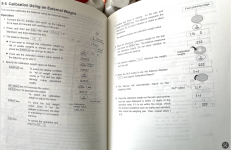Have an FX120i that will randomly start drifting. Can charge five plus cases, then I'm .04gr over an empty cup all of a sudden. If I leave the cup on it, it will continue to rise another .02gr every thirty seconds or so. On and on it rises till I zero it out. If I zero the scale after placing the cup on the scale, I can leave it there for days and it will stay at 0. Have to keep an eye on the scale as I charge and I always place the cup empty back on the scale before the next charge to make sure. Although I know what the scale says when there is no cup, and generally I can tell when things are not right. I simply do not trust it. I have only loaded 40 rounds with it.
I have tried a grounding wire, drier sheets, how I place the cup, how I look at it, how I touch the bench. I charge and trickle manually. I can slam the gate on the dispenser pretty solidly and it doesn't effect the scale. I can lean on it as heavy as I want with no effect. Bench is heavy, on industrial rubber anti vibration feet. The light above is LED. My last ditch effort is a UPS that filters the power. The outlet at the bench is on it's own breaker.
For those that have fixed drifting with a sinewave UPS, what did you get? Trying to keep this below $100.
Picture of the bench, not that I think it's going to help with the situation. Who knows.

I have tried a grounding wire, drier sheets, how I place the cup, how I look at it, how I touch the bench. I charge and trickle manually. I can slam the gate on the dispenser pretty solidly and it doesn't effect the scale. I can lean on it as heavy as I want with no effect. Bench is heavy, on industrial rubber anti vibration feet. The light above is LED. My last ditch effort is a UPS that filters the power. The outlet at the bench is on it's own breaker.
For those that have fixed drifting with a sinewave UPS, what did you get? Trying to keep this below $100.
Picture of the bench, not that I think it's going to help with the situation. Who knows.
Last edited:




